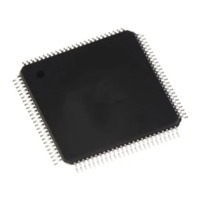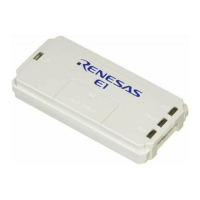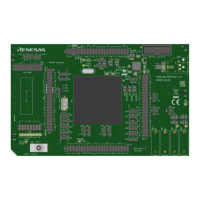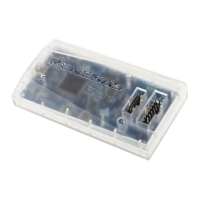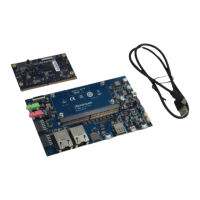Section 2 CPU
Rev. 4.00 Sep. 14, 2005 Page 52 of 982
REJ09B0023-0400
X/Y Data Addressing: With DSP instructions, the X and Y data memory can be accessed
simultaneously using the MOVX.W and MOVY.W instructions. Two address pointers are
provided for DSP instructions to enable simultaneous access to X and Y data memory. Only
pointer addressing can be used with DSP instructions; immediate addressing is not available.
Address registers are divided into two, with register R4 or R5 functioning as the X memory
address register (Ax), and register R6 or R7 as the Y memory address register (Ay). The following
three kinds of addressing can be used with X and Y data transfer instructions.
1. Non-update address register addressing:
The Ax and Ay registers are address pointers. They are not updated.
2. Addition index register addressing:
The Ax and Ay registers are address pointers. After a data transfer, the value of the Ix or Iy
register is added to each (post-increment).
3. Increment address register addressing:
The Ax and Ay registers are address pointers. After a data transfer, they are each incremented
by 2 (post- increment).
There is an index register for each address pointer. The R8 register is the index register (Ix) for the
X memory address register (Ax), and the R9 register is the index register (Iy) for the Y memory
address register (Ay).
The X and Y data transfer instructions perform word-length processing, and use 16-bit access to
the X/Y data memory. A value of 2 is therefore added to the address register in the increment
processing. To perform decrementing, –2 is set in the index register and addition index register
addressing is specified. In X/Y data addressing, only bits 1 to 15 of the address pointer are valid.
When using X/Y data addressing, 0 must always be written to bit 0 of the address pointer and
index register.
X/Y data transfer addressing is shown in figure 2.12. When accessing X and Y memory using the
X and Y buses, the upper word of Ax (R4 or R5) and Ay (R6 or R7) is ignored. The result of
@AY+ or @Ay+Iy is stored in the lower word of Ay, while the upper word retains its original
value.

